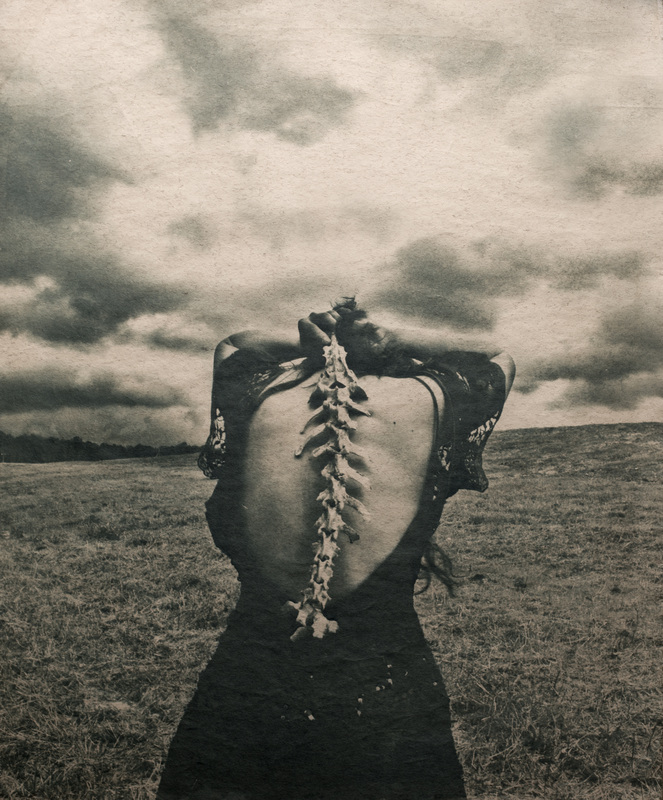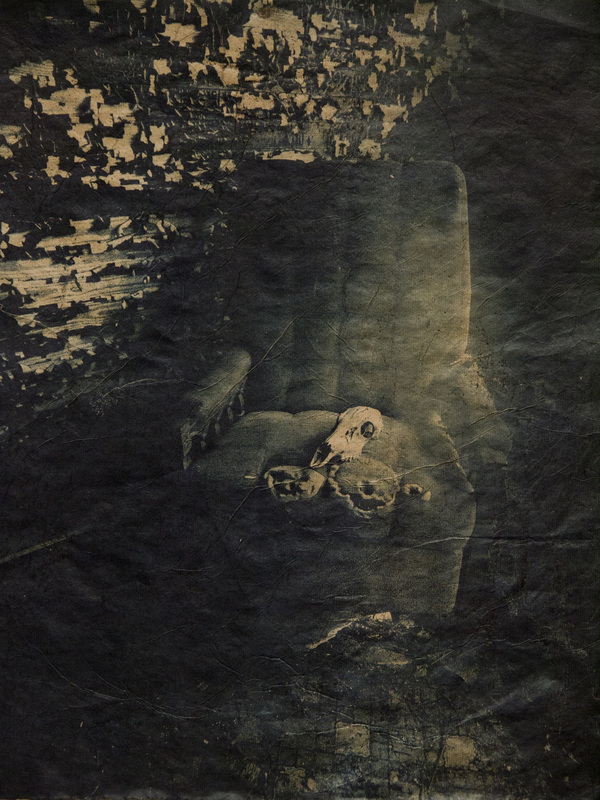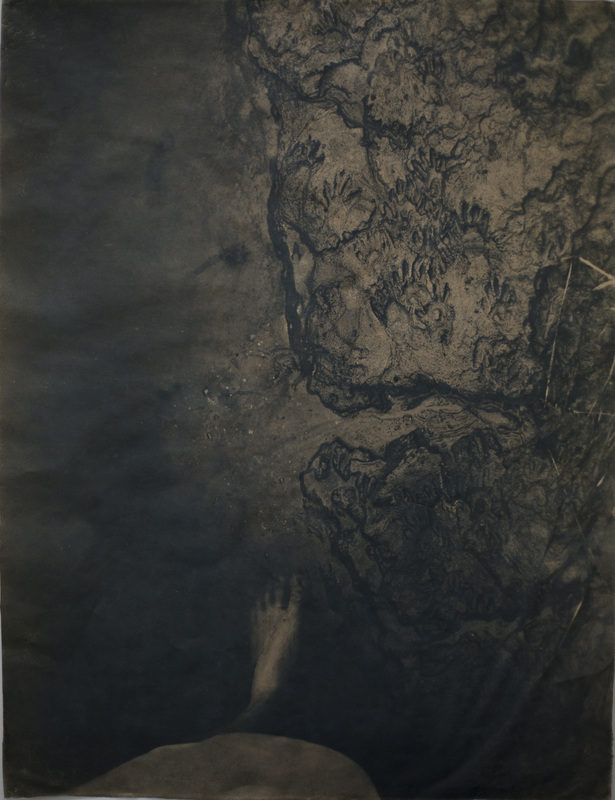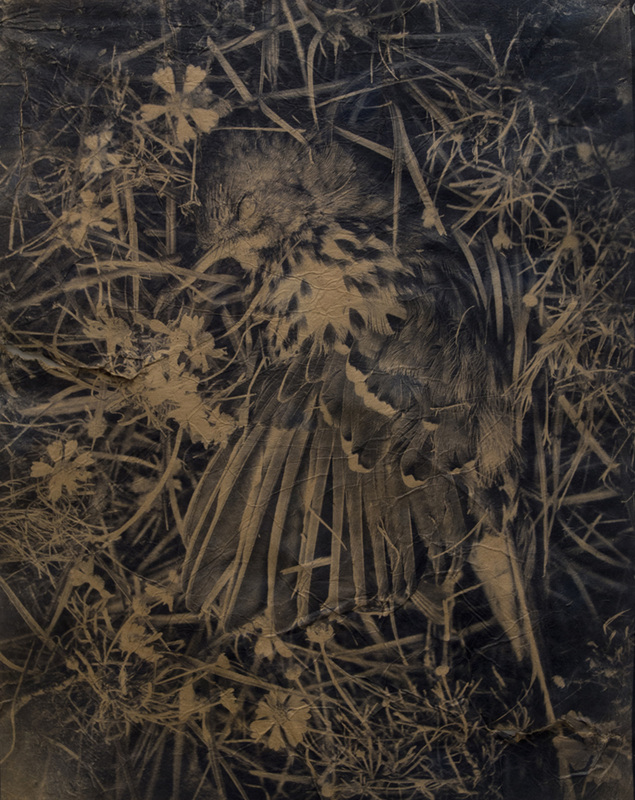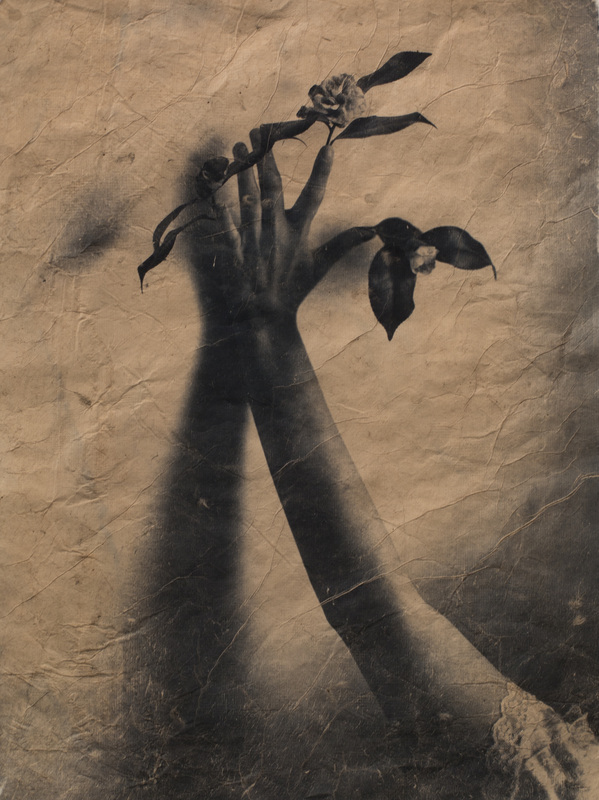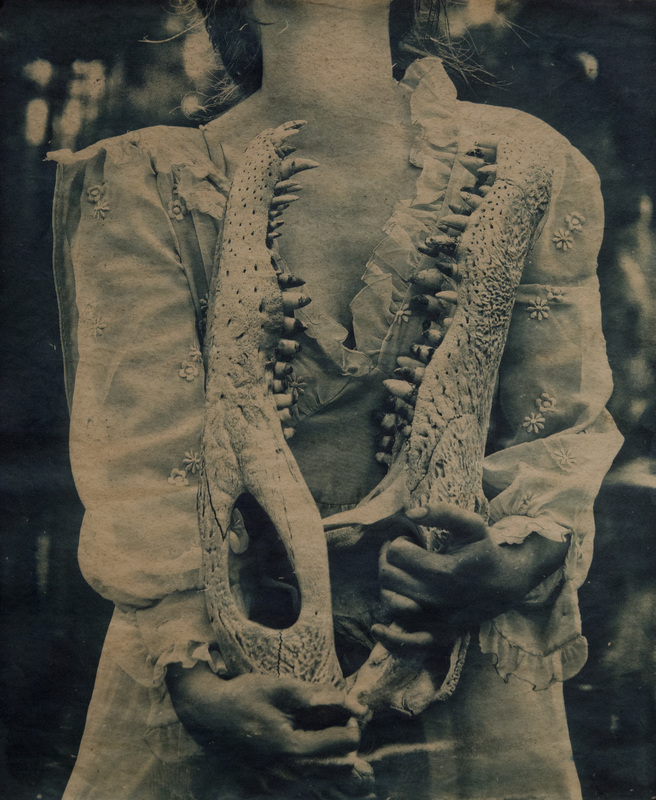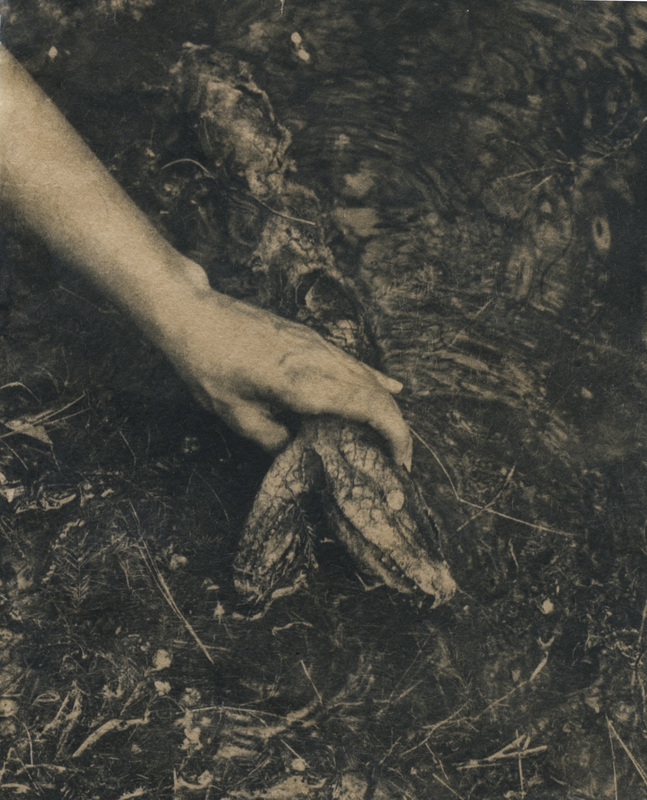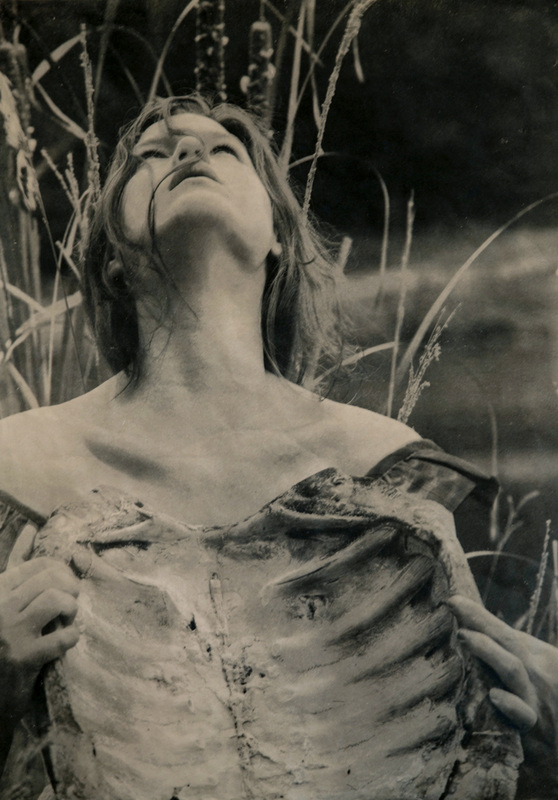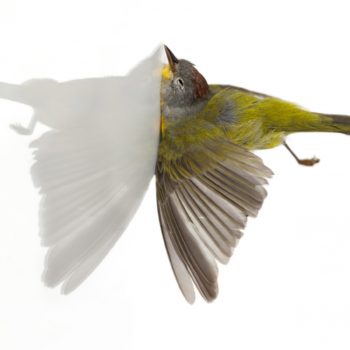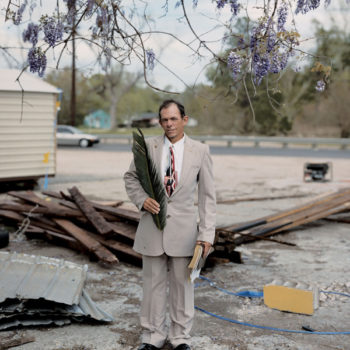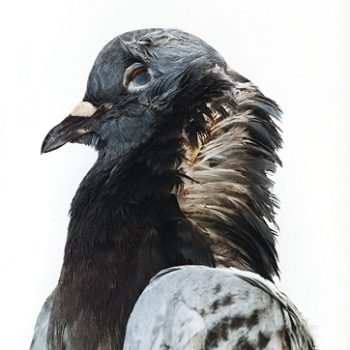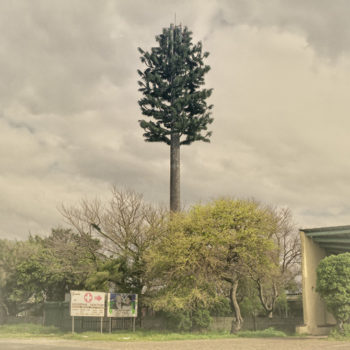Jaime Johnson’s photography struck me as soon as I saw it. Her tea-stained cyanotypes depict a female bone collector, foraging the woods, fields, streams, swamps, and riverbeds for pieces of an entire skeleton. The images feature particular animals not commonly seen in dead animal art, such as large snakes and alligators. Their presence in the series makes the story even more primitive and mysterious. Johnson’s photographs are gritty, dark, and beautiful, sometimes arrestingly so.
From the artist’s statement: “The sole work of La Loba is the collecting of bones… Her cave is filled with the bones of all manner of desert creatures: the deer, the rattlesnake, the crow. But her specialty is wolves. She creeps and crawls and sifts through the montañas, mountains, and arroyos, dry riverbeds, looking for wolf bones, and when she has assembled an entire skeleton, when the last bone is in place and the beautiful white sculpture of the creature is laid out before her, she sits by the first and thinks about what song she will sing” (Estés 25).
“Untamed” depicts a feral woman who is both collector and constructor as she gathers fragments to preserve that which is in danger of being lost to the world. The wild woman character is a strong woman who roams, rebuilds, collects, adorns, and celebrates natural phenomenon that has been forgotten. The feral woman embodies a return to the most basic principles, supporting Thoreau’s notion to “live deep and suck out all the marrow of life, to live so sturdily and Spartan-like as to put to rout all that was not life…to drive life into a corner, and reduce it to its lowest terms.”
From “Untamed”
Visit artist's site: jaimejphotography.com
Posted September 25th, 2014

